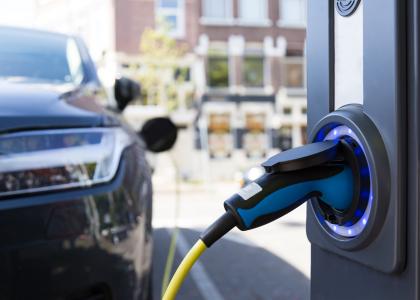On August 3rd, EPA released the final Clean Power Plan (CPP), a rule that sets performance rates and individual state targets for carbon dioxide emissions from existing power plants. Now that the emissions targets are set, energy efficiency plays a prominent role as a proven strategy that states can use to reduce energy, cut emissions, and boost the economy. As we have said, it’s not important that energy efficiency is no longer a CPP building block. The fact is that it’s prominently featured as a key compliance option for states in EPA’s materials (see Energy Efficiency TSD and Key Topics and Issues Fact Sheet), as a component of the rule’s Regulatory Impact Analysis, and even in the president’s speech announcing the rule.
Now that we’ve had time for a first read-through of the final rule, we’ve found some significant changes from the proposed version.
Setting targets
EPA revised several aspects of the CO2 target-setting calculation. While the resulting changes in target stringency vary by state from the proposed to the final rule, on average the new 2030 targets are slightly stronger. The final rule provides emissions targets in the form of a state average emissions rate (pounds of CO2/MWh of electricity generated), and translates the targets into a mass-based goal for each state (tons of CO 2 per year from affected electric generating units [EGUs], i.e., coal and natural gas power plants). In addition, the rule now accounts for uniform CO2 performance rates for two specific EGUs. States can choose to comply using any of one of these emissions targets. Energy efficiency and nuclear energy were both removed from the building blocks that are used to set CO2 targets, while the application and data used for the remaining building blocks (heat rate improvements, fuel switching to natural gas combined cycle, and increasing renewable energy) were altered considerably from the proposed rule.
Timeline and pathways for compliance
The timeline for compliance with the rule has been pushed back to 2022, with the final compliance deadline remaining 2030 and thereafter. In addition, states are required to meet a series of interim compliance goals in 2024, 2027, and 2029. Under the final rule, energy efficiency improvements can count if they are installed after January 1, 2013 and will still be saving energy in 2022. These savings can continue to receive credit for each year over the 2022–2030 period in which they save energy.
In the final rule, EPA identifies a variety of energy efficiency measures, programs, and policies that can count toward compliance. These include utility and nonutility energy efficiency programs, building energy codes, combined heat and power, energy savings performance contracting, state appliance and equipment standards, behavioral and industrial programs, and energy efficiency in water and wastewater facilities, among others.
States can now comply using a variety of expanded pathways. The final rule allows for rate- or mass-based compliance at the EGU or statewide level. In addition, states can choose a pathway to trade individually or with other states. Within a rate-based compliance pathway, states can trade energy efficiency savings or bank them indefinitely using Emission Rate Credits (ERCs). EPA also released a draft EM&V guidance document for states complying with demand-side efficiency using a rate-based pathway. The key item is this guidance is that states must determine energy savings relative to a “common practice baseline.” While energy efficiency strategies used for mass-based compliance do not require EM&V to be documented within a state plan, the associated energy savings will help states meet their allowance goals.
EPA has also proposed an early-credit option for states called the Clean Energy Incentive Program (CEIP). The CEIP awards early credit for low-income energy efficiency programs and certain renewable energy projects implemented in 2020 and 2021. The program offers a two-to-one match for state energy efficiency savings in order to jump-start these efforts in low-income communities.
Planning for the future
Energy efficiency will be a key component in low-cost plans as states contemplate their compliance options. State compliance plans are due September 6, 2016, but states can request a two-year extension. The final rule also requires states to incorporate the needs of low-income and underserved communities within their compliance plans, and fully engage these communities along with other stakeholders during the planning process. EPA is also requesting comments on several items that have not been finalized. These include the CEIP for early action credit and the draft federal plan for states that fail to submit a compliance plan by the September 2018 deadline, both available here. The EPA is also seeking comments on the Draft EM&V Guidance for Demand-side Energy Efficiency. The deadline for all three comment periods is 90 days after the final rule is published in the Federal Register, which likely means sometime in December. In the coming months, EPA will also be engaging stakeholders regarding the definition of low-income communities and the types of energy efficiency programs allowed under the CEIP.
Along with other organizations, ACEEE will be providing assistance to states as they develop compliance plans. We will also submit comments to the EPA regarding the outstanding energy efficiency items. Stay tuned for more information about these efforts and additional resources on energy efficiency in the CPP in future blog posts. For more resources on incorporating energy efficiency as a compliance strategy, visit ACEEE’s webpage and our joint NASEO-ACEEE State 111(d) Resource Hub.



